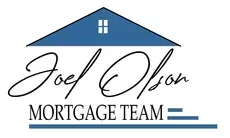Boosting Mortgage Approval Chances After Denial
Getting turned down for a mortgage can feel like a major setback, but it doesn't have to be the end of your homeownership journey. Understanding why your application was rejected is the first crucial step in moving forward. Lenders typically deny applications due to common issues like credit score problems, inadequate income, or high debt levels.
Once you know where you stand, it’s time to roll up your sleeves and work on strengthening your financial profile. This involves not just addressing credit concerns but also getting a handle on your overall finances. Crafting a realistic budget and sticking to it can help you present a more appealing picture to lenders when you reapply.
Besides banks, several other avenues can lead you towards securing a mortgage. Non-traditional lenders and government programs in Canada offer real opportunities for those willing to explore them. Focusing on these options can open doors that might seem closed for now, allowing you to take proactive steps toward owning your dream home.
Understanding Your Mortgage Denial
Facing a denial can be discouraging, but understanding the reasons behind it is key to making improvements. Common issues that lead to mortgage rejections include poor credit scores, insufficient income, and high debt levels. Credit scores play a significant role in how lenders perceive risk. A low score can indicate poor payment history or excessive debt usage, both red flags for lenders. Similarly, if your income doesn't meet the lender's threshold or if you have large outstanding debts, your application can be jeopardized.
Reviewing feedback from the lender is vital. This feedback provides insight into specific areas that need attention. Maybe it’s about increasing your income or tackling some debts. Lenders may provide advice or indicate what changes might make your application more favourable in the future. Understanding their criteria better equips you to address them effectively.
Lenders often look at additional factors like employment stability and down payment size. Addressing these areas can create a stronger profile. Understanding where you fell short matters because it directs your efforts towards the right solutions. By focusing on these specific areas, you can prepare yourself better for future applications, helping you get closer to securing the mortgage you need.
Strengthening Your Financial Profile
Improving your financial profile is essential for increasing your approval odds. Start by enhancing your credit score. Manage this by paying bills on time, reducing your outstanding balances, and refraining from opening new credit accounts right before applying again. Regularly check your credit report for errors, as correcting mistakes can lead to a quick score boost.
Another vital strategy is reducing your debt. High debts make lenders wary, so focus on paying down credit cards and loans. Create a repayment plan that prioritizes higher interest debts first. A lower debt-to-income ratio can significantly impact your application's success positively.
Organizing your financial documents is equally important. Ensure you have recent pay stubs, bank statements, and tax returns readily available. This organization showcases your financial stability and readiness to potential lenders.
Additionally, setting up a realistic budget can help you manage your finances better. Identify your essential expenses, cut back on unnecessary spending, and allocate more towards savings and debt repayment. Keeping a budget not only assists in financial management but also demonstrates to lenders that you have control over your finances.
Improving these aspects of your profile can strengthen your application considerably, making you a more attractive candidate for mortgage lenders.
Exploring Alternative Lending Options
If traditional banks are not an option, non-traditional lenders can serve as a valuable alternative. Credit unions, private lenders, and online mortgage companies often provide more flexible lending criteria. Credit unions, for example, are member-focused organizations that may offer personalized services and competitive rates. They might look at your overall financial picture rather than sticking strictly to credit scores.
Private lenders are another option, usually catering to those with unique financial situations. These lenders often approve applications quicker and with fewer requirements. However, it's important to note that private loans may come with higher interest rates. Online mortgage companies streamline their processes through digital platforms, making application procedures more straightforward and potentially faster.
When choosing non-traditional lenders, understanding the differences is crucial. While banks may offer lower rates, non-traditional lenders can provide more leeway in approval processes. Consider the interest rates, fees, and terms carefully. While these alternative lenders can increase your chances of approval, it’s essential to compare all your choices and ensure the offer benefits your specific needs.
Utilizing Supportive Programs and Resources
The Canadian government offers several programs designed to support homebuyers, providing another avenue to explore after a mortgage denial. The First-Time Home Buyer Incentive helps Canadians lower their monthly payments without interest, making it easier to afford a home. Eligible buyers can apply for a shared-equity mortgage, where the government contributes a portion of the home’s purchase price.
Another helpful program is the Home Buyers' Plan, which allows Canadians to withdraw from their Registered Retirement Savings Plans (RRSPs) to buy or build a qualifying home. This program offers an opportunity to make a down payment more manageable without the added burden of long-term financial strain.
Working with mortgage experts can further enhance your strategy for approval. Professionals can guide you through the intricacies of these programs and find the best fit for your situation. They can also assist in preparing your financial profile to meet necessary requirements, ensuring a smoother application process.
Navigating a mortgage denial requires persistence and creativity. By understanding the reasons for rejection, improving your financial profile, exploring alternative lenders, and utilizing supportive programs, you can significantly improve your chances of success. Each step you take brings you closer to achieving your goal of homeownership.
At the Joel Olson Mortgage Team, we understand that mortgage solutions aren't one-size-fits-all. Our experienced
mortgage brokers in BC, Canada, are dedicated to helping you find the best path forward. Whether you're seeking to improve your credit, explore new lenders, or capitalize on government programs, we're here to support your journey. Contact us today and let us help you turn denials into opportunities on your path to owning a home.





